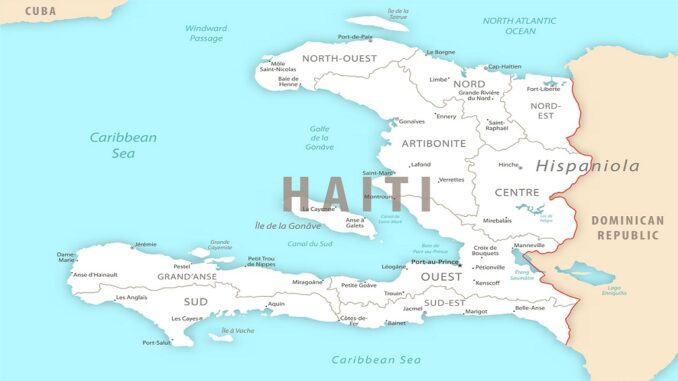
Decentralization was a prominent theme throughout Haiti after a 7.0 magnitude earthquake struck near the capital in January 2010, killing up to 300,000 people in just 35 seconds, and again more recently in August 2021 when a 7.2 earthquake impacted the country’s southwestern region. This concept, however, first emerged in Haiti over thirty years ago in the wake of the 29-year Duvalier father-son dictatorship. In fact, the post-Duvalier Haitian Constitution of 1987 outlined a detailed governance framework that endeavored to promote improved local and regional development, participatory governance, and greater inclusivity nationwide. Perplexingly, however, Haiti today is no closer to realizing this objective than it was then while its political, economic, and social standing continues to worsen as highlighted by the July 2021 assassination of a sitting president.
To better understand why Haiti has not made much progress towards becoming a decentralized state, this study evaluates the potential for and limitations of the 1987 Constitution’s decentralizing principles to identify how the country might overcome its persistent challenges. Moreover, the paper offers a case study analysis in support of Weingast’s (2009) second generation theory of fiscal federalism which posits the need to make explicit the organizational arrangements, as well as the on-the-ground political realities, that influence whether or how decentralization policies are implemented within a particular country-context.
Bear in mind that since its historic independence in 1804 as the world’s first black republic, the Haitian state that emerged was a highly stratified classist and race-based society. A light-skinned minority elite, largely residing in the capital, maintained exclusive control over Haiti’s political, economic, and institutional resources while the darker-skinned masses were restricted to rural areas on the outskirts of Haitian society with their movements to and from urban spaces highly regulated. For example, if a person from the countryside was found in the city on a day that was not a designated market day, that individual could be either fined or arrested.
Furthermore, it was not until the early 1990s that every Haitian received the same birth certificate. Prior to this, Haitians born in rural areas had the word paysan, or peasant, stamped on their birth certificates to explicitly distinguish them from moun lavil (urban dwellers) thereby effectively making them second-class citizens. The call for a renewed Haitian state in the 1987 Constitution therefore – where all citizens, regardless of geographical location or background, would have access to state resources as well as the right to thoroughly participate in the country’s decision-making processes – was an attempt to reify these longstanding societal divisions using decentralization as the primary tool for unification.
Methods
In-depth interviewing and content analysis were the primary research methods for this study. Specifically, eight Haiti-based decentralization experts and practitioners were interviewed over a fifteen-month period. These individuals were selected for their engagement in decentralization, local governance, and local capacity building efforts in Haiti from the 1990s through the timeframe of the study. The interviews were tape-recorded, anonymized, transcribed, and coded using the NVivo 11 qualitative data analysis software package. Theory-generated codes, based on Weingast’s (2009) second-generation theory of fiscal federalism, were employed and additional codes emerged from observation.
Also, seven legislative and technical documents served as the basis for the content analysis. Collectively, these documents provided an overview of Haiti’s experience with decentralized local governance since the post-Duvalier Constitution of 1987 along with the temporal, spatial, and social dynamics that have characterized this attempt. Coupling semi-structured expert interviews with my analysis of these documents provided a more comprehensive assessment regarding the complex topic of post-Duvalier decentralization that neither technique on its own would have sufficiently afforded.
Findings
The study revealed two findings: firstly, there is a departure between how decentralization is understood in a Haitian context from what is commonly accepted in the literature, given Haiti’s unique sociopolitical realities. Secondly, the study found that key central government actors have intentionally capitalized on administrative gaps in the Constitution of 1987, rather than address them, to instead further their own political and material interests.
Whereas the literature defines deconcentration and devolution as types of decentralization existing along a spectrum from the least transfer of power to the most, in Haiti, deconcentration and decentralization are viewed as two separate but related concepts. Given that moun andeyò (which literally translates to “people on the outside”) have existed on the periphery of Haitian society since the country’s founding, the idea is that employing deconcentration would first establish a baseline relationship between the central government and these Haiti’s rural populations before decision-making and increased responsibilities could be transferred to their localities through decentralization – essentially referring to what the literature expressly defines as “devolution.” Deconcentration in Haiti is thus viewed as a way of redefining the state’s relationship with moun andeyò to begin rectifying the longstanding spatial and sociopolitical discriminatory dynamics that have always been present.
The second finding is that whereas the Constitution of 1987 created new subnational territories and local governing bodies as part of its effort to decentralize, one of its greatest shortcomings is that it did not explicitly outline how power would be distributed from the central government to the localities, the roles of these new local entities nor the resources they would have at their disposal to pursue their own development plans. Additionally, the Constitution relies on the installation of these local assemblies to facilitate the newly created decentralized governance structure as well as to temper executive power at the central government level. It also left it up to the executive branch, however, to define the rules and regulations for how decentralization would be implemented. As a result, minimal effort has been expended by central government stakeholders to implement the decentralization process that the Constitution outlines less they risk losing some of the power and authority that they currently wield. The study specifically found that nowhere is the stalemate over the decentralization question more acute than in the Chamber of Deputies, the lower house of Parliament, where deputies are not interested in passing legislative measures that would delineate powers among the constitutionally defined levels of government as they would be the most impacted by its implementation.
Consider that in the absence of a clearly defined local governance structure, and since the concept of elected mayors is still relatively new in Haiti – having only emerged in the 1990s, deputies have over time been able to posit themselves as an intermediary between the populace and central government through a few highly visible but illicit community-based projects. In so doing, they have been able to instead give the impression to the electorate that they are more effective than the mayor regarding the delivery of public services. By hamstringing the mayor in this way, deputies have been able to minimize the likelihood that the mayor could successfully run for higher office (namely the coveted role of deputy) while also maintaining a monopoly over limited state resources to safeguard his own political and material gains.
At the same time, the executive branch has also moved to undermine the bottom-up governance structure outlined in the Constitution by failing to conduct elections as a way of dissolving both Chambers of Parliament to their advantage. This was the case in 2015 and again most recently since January 2020, where the late president maintained a de facto government and was moving to further consolidate executive power. In sum, infighting between local stakeholders as well as among central government actors further problematizes the decentralization question in Haiti.
Conclusion
This study’s findings exemplify Weingast’s (2009) second-generation theory of fiscal federalism in that the fiscal and political incentives that subnational leaders are influenced by should be taken into consideration when evaluating the extent to which decentralization policies are adopted or not within a particular setting. Public officials ought not to be viewed as benevolent social planners, driven by the goal to maximize welfare, but rather as stakeholders shaped by political arrangements that require them to focus on their re-election prospects, for example, and essentially their ability to maintain power.
Moreover, the study also found that in a Haitian context, any attempt at decentralization must first demonstrate an unobstructed and intentional departure from the country’s segregationist history of urban and rural locales distinguished by how the state delivers basic public services. Whereas the literature defines deconcentration as the least transfer of power to local authorities, in Haiti, deconcentration is viewed as an essential component to establishing an initial connection between the central state and Haiti’s rural masses before increased authority could be granted through decentralization, meaning devolution.
Notwithstanding these findings, the 1987 Constitution’s aspirational appeal to a decentralized Haiti rests on whether greater political will among central government actors, along with a concerted integration of all Haitian citizens into the affairs of the state, will materialize.
This blog was authored by Vanessa L. Deane, Assistant Clinical Professor and Director of Urban Planning at the Robert F. Wagner Graduate School of Public Service, New York University. The blog is based on her recent paper by the same title, published in the Journal of Haitian Studies. This paper was selected by the Local Public Sector Alliance as the winner of the Outstanding Decentralization Paper Award for the Latin America and Caribbean (LAC) Region (2021/22).



